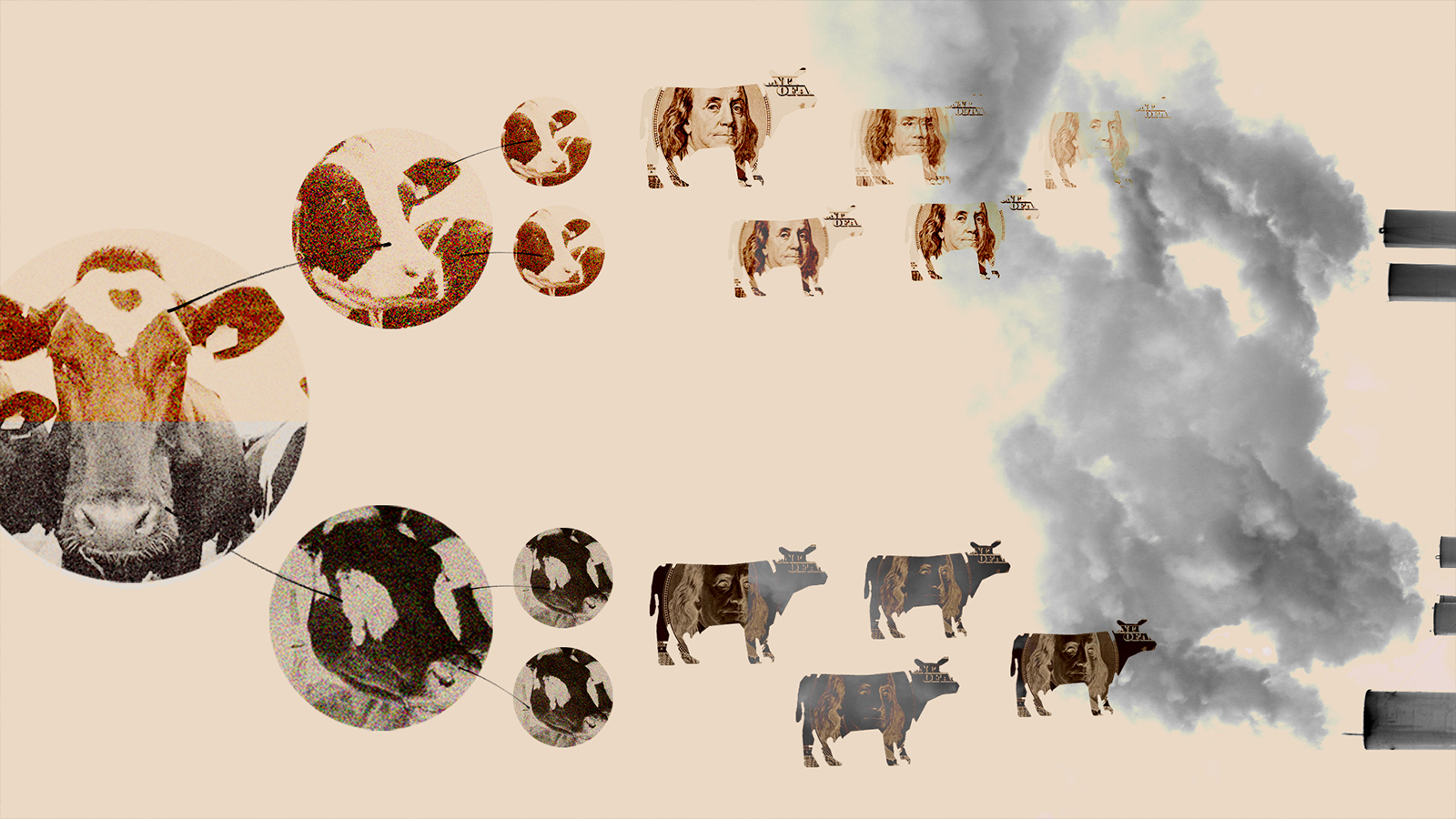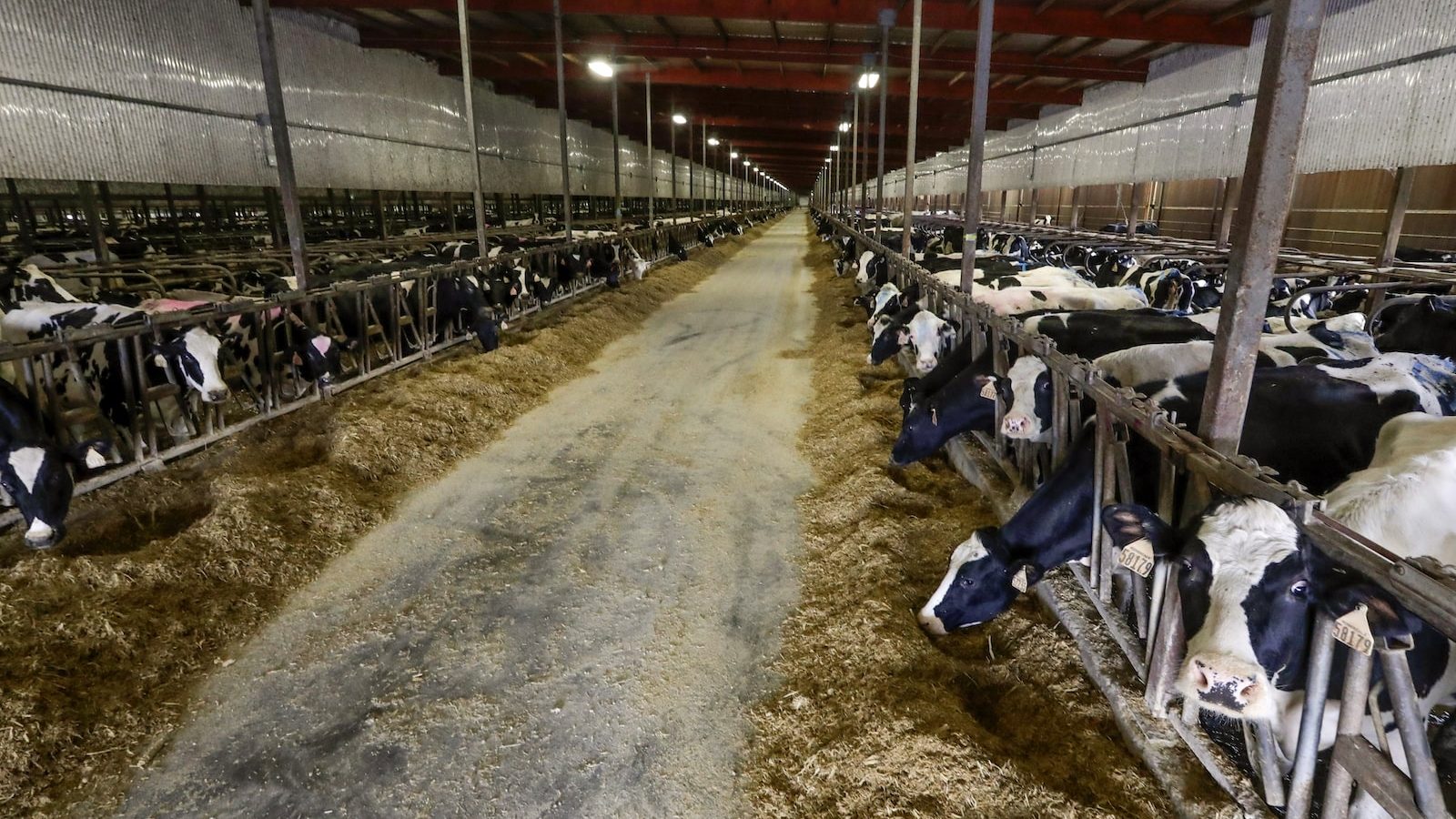This story was published in partnership with The Counter.
Every year, California dairy farms emit hundreds of thousands of tons of the potent greenhouse gas methane, which gets released when livestock operations pool manure in open-air lagoons. To put a lid on these emissions, the state is lavishing the industry with lucrative subsidies to capture methane before it escapes into the atmosphere. Such efforts are currently on track to prevent 1.8 million tons of carbon dioxide equivalent, a standard unit for measuring greenhouse gas emissions, from being emitted annually by the end of this year. It’s an essential part of the Golden State’s plan to shrink methane emissions by 40 percent of 2013 levels by the end of the decade.
California has sector-specific targets for emissions reductions, and cuts at dairy farms are attributed to the livestock sector. Curiously, however, the state is simultaneously crediting many of those same emissions reductions to its transportation fuel sector — and, some argue, dramatically overstating its progress in that sector as a result.
That’s because much of the methane captured at dairy farms is converted into natural gas, which is then added to the state’s fuel supply. California’s peculiar emissions accounting techniques dictate that, whenever a dairy farm captures methane from manure and converts it to natural gas, the state actually considers that fuel production process to be carbon-negative. In essence, through the simple act of adding a new source of natural gas to the state’s fuel supply, California claims to have both reduced livestock emissions and lowered the carbon intensity of its transportation fuels.
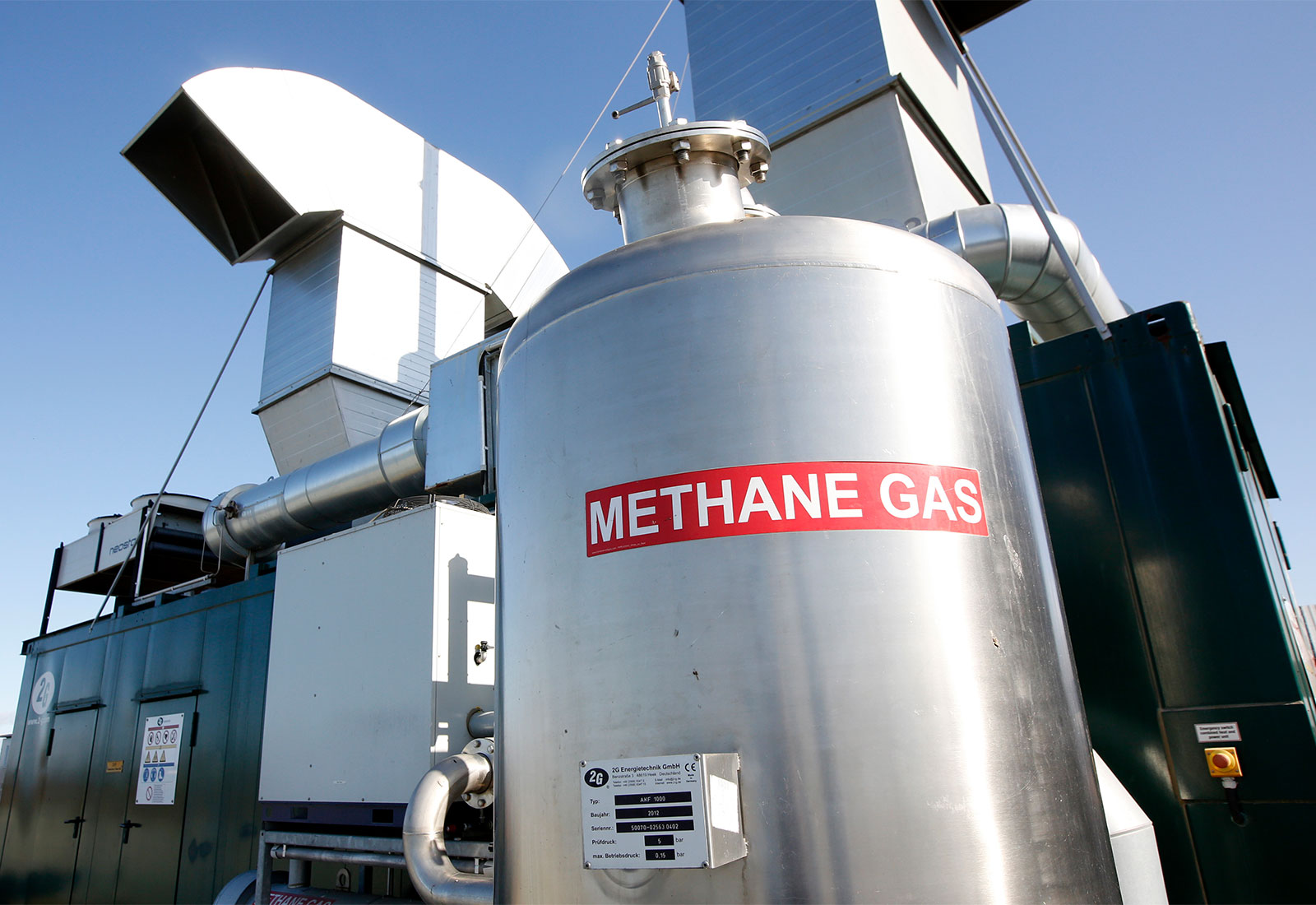
For example, in 2018 the state’s department of food and agriculture gave a $1.9 million grant to a company called Calgren Dairy Fuels to capture methane at Vander Poel Dairy, a farm in Tulare County with a cattle population of approximately 11,000. The company used the funds to pay for the installation of a methane digester, a towering silo that traps emissions from manure before they can wreak havoc on the atmosphere. The agriculture department estimates that the project will prevent the release of 290,000 metric tons of carbon dioxide equivalent over a decade. It’s equivalent to removing 6,250 cars from the road in the same time period.
The California Air Resources Board, the state’s lead agency in charge of overseeing air pollution and climate initiatives, logs these avoided emissions toward the state’s progress on its 2030 methane targets for the livestock sector, which are mandated by state law. But this isn’t the only instance where the agency is counting the methane reductions at Vander Poel Dairy toward California’s climate goals: The agency is also attributing the emissions savings to a separate program called the Low Carbon Fuel Standard, or LCFS.
First implemented in 2011, the LCFS program has one overarching goal, which is to reduce the average carbon footprint for transportation fuel in California. Each year, the air resources board sets a so-called “carbon intensity” target for fuel, which gets progressively lower with each passing year. Gasoline and diesel producers regularly exceed this target, because they are considered to have a high carbon intensity — in other words, they emit a relatively high volume of greenhouse gasses per unit of energy produced.
On the other hand, renewable fuel producers can fall below the target; when they do, they’re allowed to generate and sell lucrative LCFS credits, each representing a metric ton of carbon dioxide saved relative to the year’s carbon intensity target. The idea is that credits and deficits will balance each other out, year after year, resulting in a gradual decline over time. This is where dairy farms come into play: After methane is captured from manure, an energy company can convert it into natural gas and sell it for use as a transportation fuel.
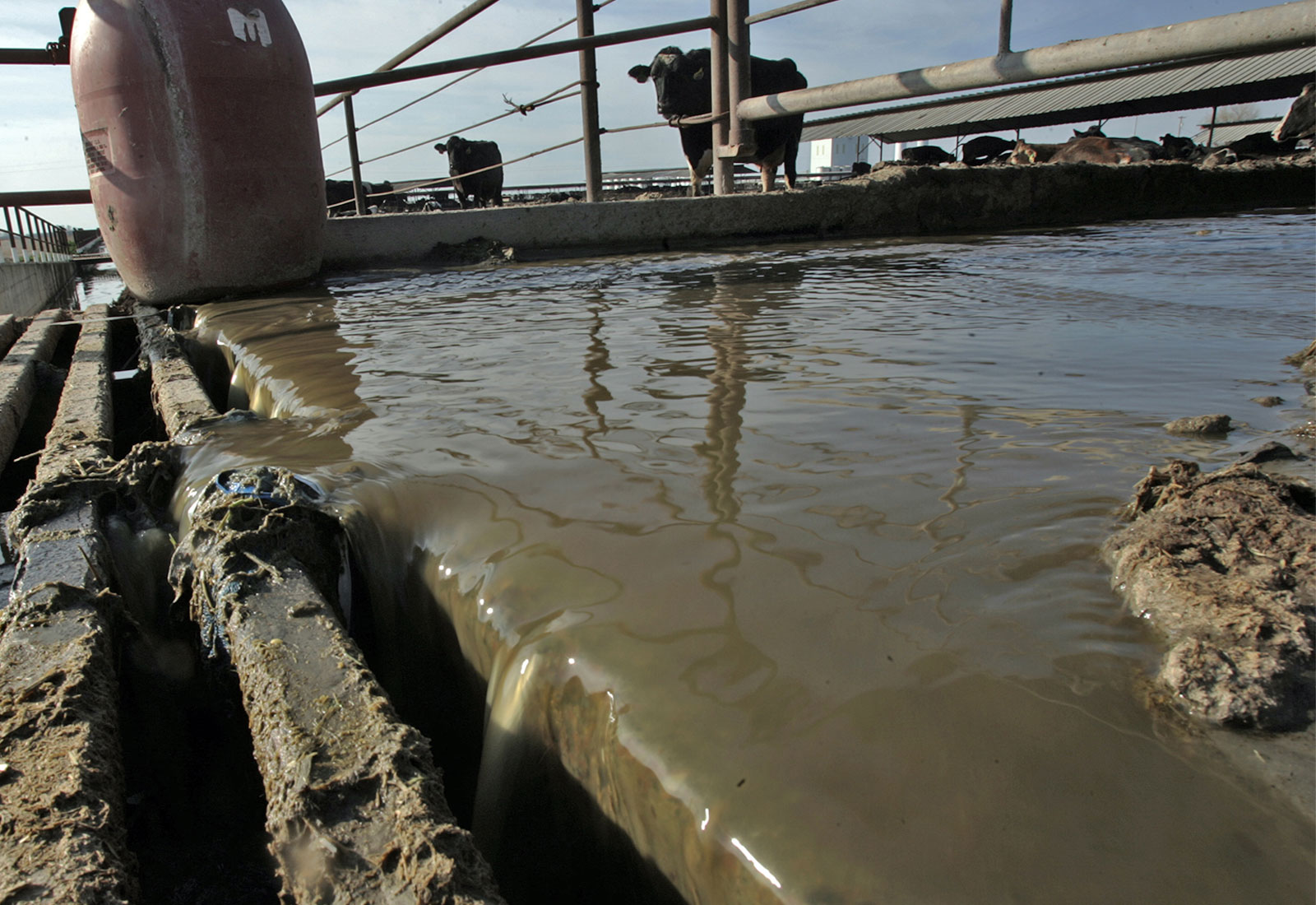
When natural gas is extracted from fossil sources, such as through fracking, the air resources board considers the fuel to have a relatively high carbon intensity. However, the agency actually considers natural gas produced by dairy digesters to have a negative score. That’s because the air resources board calculates carbon intensities for fuels based on what it calls a “well to wheel” analysis, adding up emissions associated with both the combustion of the fuel in a vehicle and those used to generate the fuel in the first place.
Because natural gas production at dairy farms is an alternative to manure methane being released directly into the atmosphere, the fuel’s carbon intensity score is credited with a large negative number that reflects the tons of methane would otherwise get released from manure. In other words, for the purposes of LCFS, the air resources board considers natural gas produced by dairy digesters to be a fuel that has essentially pulled emissions out of the atmosphere, rather than one that’s contributing to new emissions.
“California is treating factory farm gas systems at dairy farms like they are devices that suck carbon from the air,” said Brent Newell, a lawyer who worked as a senior attorney for the Food Project at Public Justice, a nonprofit legal advocacy organization, until March of this year. Newell represented state residents who had petitioned the air resources board to reconsider the way it calculates carbon intensities for dairy digester fuels.
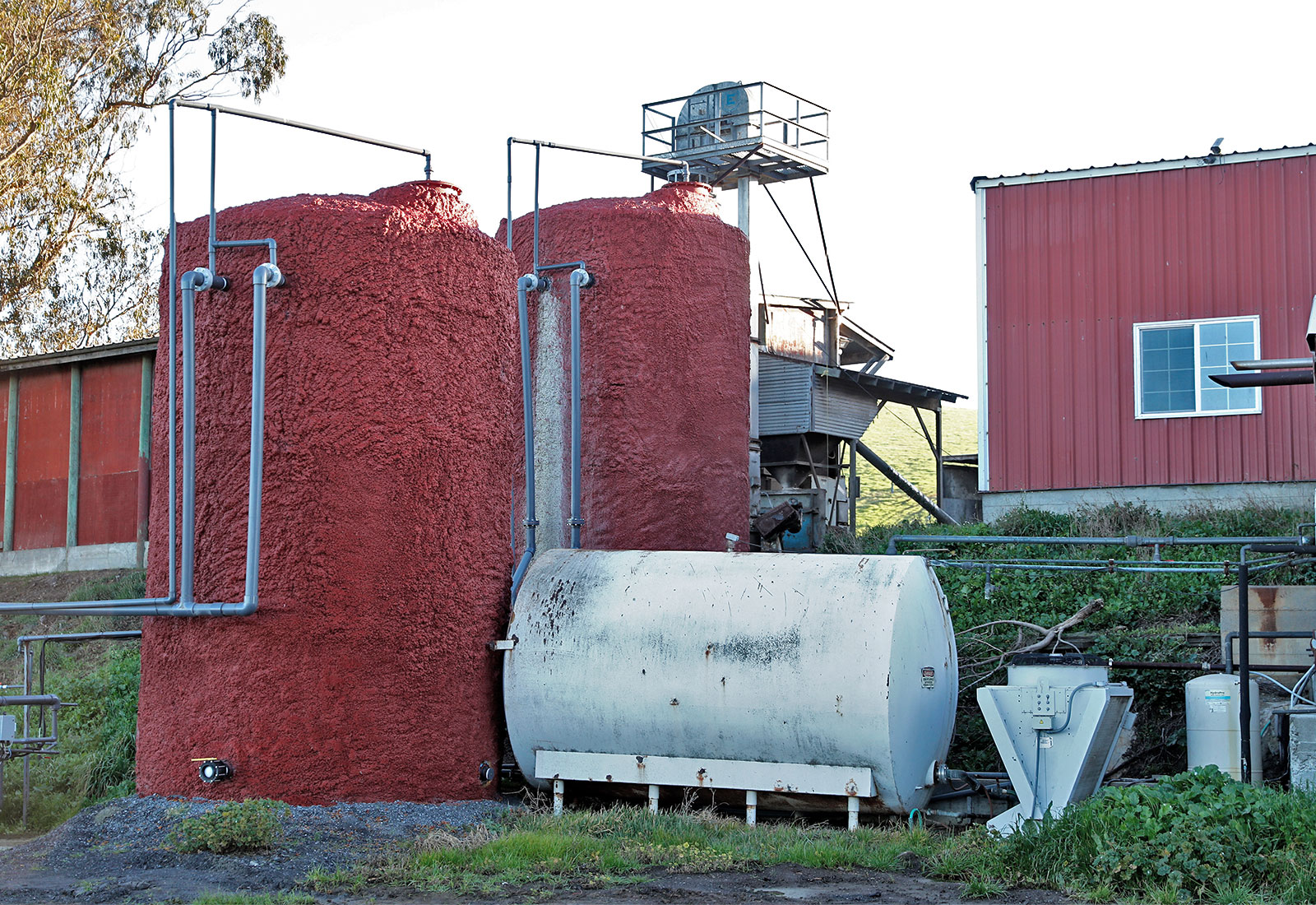
Even if one endorses the LCFS program’s negative scoring for certain fuels, it still appears that the air resources board is counting the avoided emissions at Vander Poel Dairy twice: once toward progress in reducing emissions in California’s dairy sector, and again toward shrinking the average carbon footprint of the state’s transportation fuels, potentially overinflating California’s purported climate progress in the process.
“That is a classic case of double counting,” said Danny Cullenward, a lawyer and policy director at the nonprofit Carbon Plan, an organization that evaluates climate programs. “The same ton [is] counted in two places.”
After reviewing publicly available data on dairy and livestock sector climate subsidies, Grist and The Counter have identified at least 10 instances where the state is double-counting climate benefits across both the livestock and transportation fuel sectors. The air resources board estimates that these farms will collectively reduce agricultural emissions by 1.6 million metric tons of carbon dioxide equivalent over a decade. Separately, the air resources board is also counting captured methane at the same 10 farms toward its target of reducing the carbon intensity of transportation fuels by 20 percent by 2030.
The agency does not disclose exactly how many LCFS credits any individual dairy farm generates, citing business confidentiality. However, according to aggregate program data, manure-based fuels generated a total of over 2.1 million credits in 2021. This represents about 10 percent of total credits generated last year, despite the fact that manure-based fuels represented a much smaller fraction of the total renewable fuel volume. As a result, the continued success of the LCFS program depends at least in part on considering dairy digester fuel to be carbon negative.
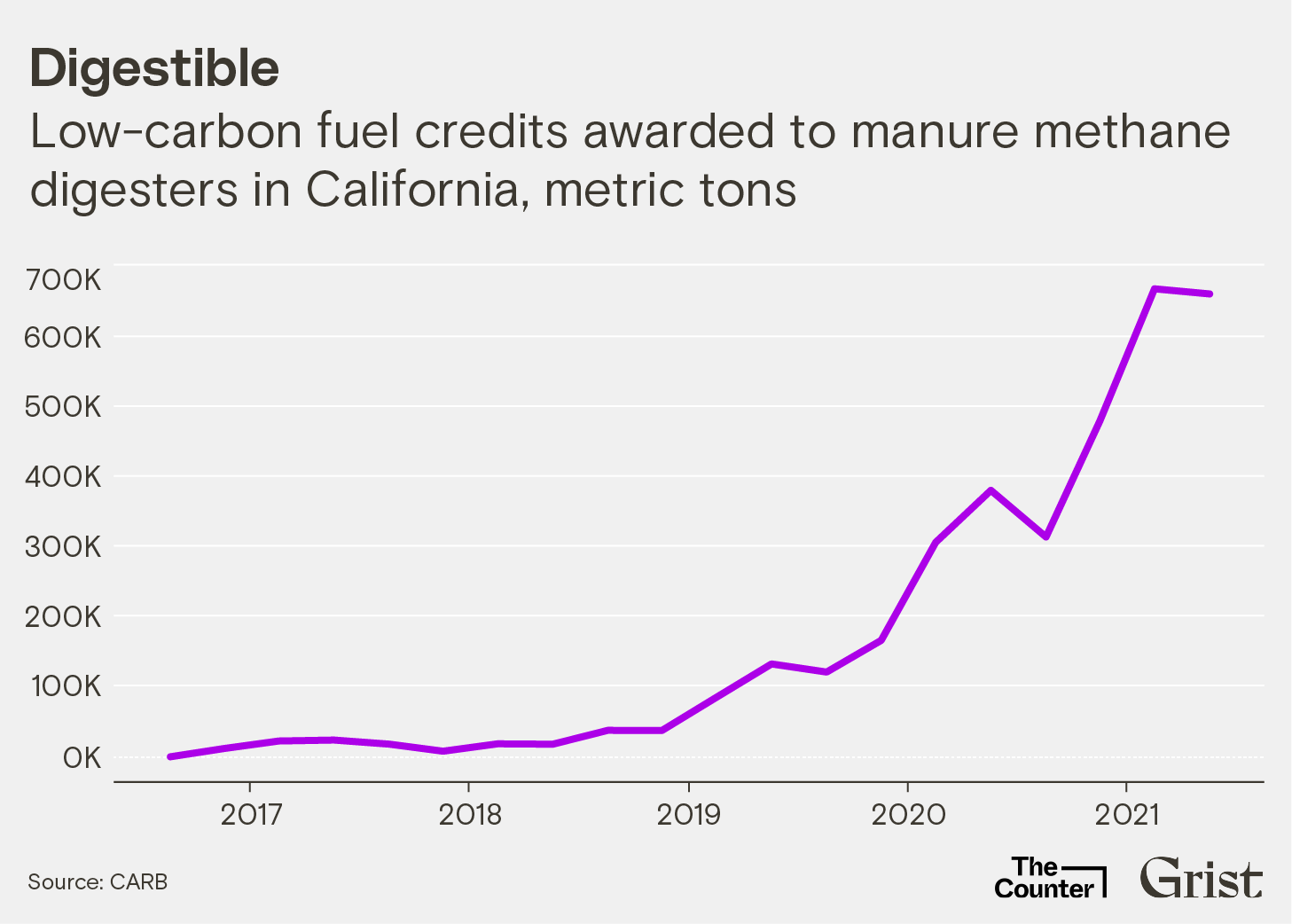
For some, this arrangement raises questions about the legitimacy of credits generated under LCFS. According to the air resources board, each credit is supposed to represent a metric ton of carbon dioxide equivalent that would have been emitted into the atmosphere, if not for the program. In cases where dairy farms have already received grants or subsidies in exchange for their commitment to capturing methane, well before LCFS was part of the equation, critics argue that those farms should be ineligible to participate in the program.
In an email response to questions from Grist and The Counter, the air resources board disputed the term “double counting” but did not dispute that it was counting the same emissions reductions multiple times across different climate programs.
“California’s numerous greenhouse gas emissions reduction programs often incentivize emissions reductions in the same sector,” an agency spokesperson wrote. “The same general concept applies to the interplay between the Low Carbon Fuel Standard regulations and other programs — by encouraging the capture of methane emissions at dairies and directing that methane in the transportation sector, the program supports dairy sector methane emissions reductions and rewards the displacement of fossil fuels in the transportation sector, thereby reducing [greenhouse gas] emissions associated with transportation fuel use.”
Nevertheless, nothing about LCFS requires natural gas from dairy farms to replace natural gas from fossil sources; it simply gets added to the state’s overall fuel mix. It’s also far from self-evident that LCFS is reducing greenhouse gas emissions associated with transportation fuel. By design, the program is focused narrowly on lowering the average carbon intensity across all fuels. Under this arrangement, it’s feasible for average carbon intensity to go down over time, even as total emissions rise.
The double counting arising from the LCFS program’s design is not limited to methane reductions in the dairy sector. In a petition filed to the air resources board last fall, a coalition of environmental groups and California residents represented by Public Justice flagged eight instances where the state was attributing the same methane reductions to both LCFS and a third climate initiative called the Aliso Canyon Mitigation Agreement.
The Aliso agreement is a program administered by the air resources board to offset a massive natural gas leak that took place in Southern California in 2015, one of the largest such leaks in U.S. history. The disaster unfolded at a facility belonging to the utility SoCalGas, and it resulted in the release of 109,000 metric tons of methane into the atmosphere over 100 days. The leak sickened nearby residents and forced thousands of families to flee their homes.
Under the terms of the Aliso agreement, the air resources board has distributed a total of over $25 million in loans to California dairy farms to fund the construction of digesters to capture methane from manure. The agreement’s goal is to ultimately capture 109,000 metric tons of methane across participating farms, offsetting the climate effects of the 2015 disaster.
Two players heavily involved in the Aliso agreement are the energy companies Chevron and California Bioenergy, whose shared investments in eight dairy digester projects across the San Joaquin Valley are estimated by the air resources board to capture 1.9 million metric tons of carbon dioxide equivalent over a decade. However, while these emissions cuts are intended to offset the Aliso methane leak, the same eight projects are simultaneously participating in the LCFS program. That means that the state is counting their methane emissions reductions a second time toward its progress reducing the carbon footprint of transportation fuels.
The petitioners point out that allowing dairy farms to simultaneously participate in the Aliso agreement and the LCFS program leads to one “perverse result”: The arrangement actually enables greater emissions than a scenario where LCFS is out of the picture. That’s because when a dairy digester generates and sells an LCFS credit to a fossil fuel producer, that credit is the necessary license for the buyer to emit more greenhouse gases than it would otherwise be allowed. In other words, when a dairy farm participates in both programs, it’s first reducing methane emissions under Aliso, then generating credits that permit higher emissions under LCFS, effectively undercutting Aliso’s claims to offset the natural gas leak on a one-to-one basis.
“The Aliso Canyon Mitigation Agreement that [the air resources board] negotiated with [SoCalGas] legally requires SoCalGas to pay for methane reductions at factory farm dairies in California,” the petition reads. “Under no circumstances should mitigation for the Aliso Canyon disaster simultaneously qualify for credits generated and used in the LCFS.”
By design, the LCFS program is supposed to incentivize the production of low-carbon fuels at the expense of high-carbon fuel producers. However, if a dairy farm is already capturing its methane emissions, thanks to a loan from Aliso agreement or dedicated grant from the agriculture department, then the LCFS program isn’t incentivizing anything at all, according to Newell, the attorney who worked at Public Justice.
“There is no causal link between the LCFS and those reductions happening,” he told Grist and The Counter.
The petitioners insist that the LCFS program is supposed to produce what’s known in climate programs as “additionality”: emissions reductions that are attributable to the program and the program alone. If it’s not doing this, argue the petitioners, then the LCFS program isn’t actually doing anything to advance progress on climate. It’s simply taking credit for reductions achieved through other initiatives, like the agriculture department’s grants or the Alison Canyon agreement.
By allowing dairy farms to participate in multiple climate programs, California climate regulators risk over-incentivizing methane capture. This occurs when digester subsidies become so lucrative that the production of manure and the methane it releases becomes a revenue stream in and of itself — meaning there is an incentive to produce more manure and its associated methane, rather than less. Dairy digester developers themselves have suggested that this may already be happening. In an investor meeting last fall, Chevron executives projected that the company’s investments in digesters are expected to yield “double-digit returns” in the coming years, thanks to the negative carbon intensities associated with natural gas production from dairy methane.
Under these projections, private entities stand to reap generous payouts from digesters funded in large part by public climate dollars. In industry parlance, collecting multiple streams of revenue to support a single digester is known as “stacking.” Michael Boccadoro, executive director of DairyCares, a coalition of dairy farms and trade groups that has lobbied in favor of methane capture subsidies for the livestock sector, defended stacking across programs like LCFS, Aliso, and livestock sector grants. Without multiple sources of revenue, he argues, digester technology would be financially impractical for farms.
“It takes the stacking of incentives to make the projects work,” Boccadoro said.
An additionality test could make it much harder for dairy farms to receive subsidies from multiple climate programs simultaneously. When asked whether the air resources board should implement an additionality test for the LCFS program, the agency defended its current administration of the program, noting that such a standard isn’t required under state law.
But environmental advocates, including last fall’s petitioners, say that such a standard would strengthen the state’s climate programs, in part by ensuring that emissions reductions aren’t double counted across multiple initiatives.
“We need to have actual reductions, not paper reductions,” said Tyler Lobdell, staff attorney at Food and Water Watch, one of the petitioning organizations.
It remains to be seen whether the California Air Resources Board will consider changes to the LCFS program in response to recent concerns about additionality and double counting. In January, the agency denied the petition, arguing that it couldn’t consider any updates to the LCFS program due to potential conflicts with other, ongoing efforts to update the state’s overall climate strategy.
In the meantime, dozens more dairy digesters supported by public funding are currently under construction. In a March report, the agency estimated that another 96 digesters will be completed by the end of this year — projects expected to also participate in the LCFS program once they begin capturing methane and producing natural gas.

